Located in the southwest of China, Tibet bordered by Myanmar, India, Bhutan, Nepal, Kashmir, and other countries and regions. The average altitude of Tibet is above 4,000 meters, so it is known as the "Roof of the World". With stunning mountain and lake views and fascinating religious culture, a Tibet tour has become a must-do for all travel lovers. The below itinerary includes all Tibet must-sees. The Potala Palace, the Drepung Monastery, and the Jokhang Temple are the best places to learn about the Tibet culture. And Mount Everest is the best place to admire the plateau view of Tibet. All travelers who have been to Tibet say that going to Tibet is not only a journey for majestic views but also a journey for purifying the soul. If you want to know the trip to Tibet cost, contact us right now!

Welcome to Tibet! Our local guide will meet you at the arrival hall with your name sign and a big smile. Along the way, you will enjoy the stunning views along the Yarlong Tsangpo River, the longest river in Tibet. Yarlong Tsangpo River is also known as the mother river of Tibet. The Yarlong Tsangpo River Grand Canyon is the world's number one canyon and has been certified as the deepest and the longest grand canyon in the world by the World Records Association. There is a saying among travel enthusiasts: when traveling in Tibet, there is scenery everywhere, but the most attractive part is always on the road. So don’t sleep all the way. A picture stop is deserved. After check-in, you can have a rest and acclimate yourself to the high altitudes.

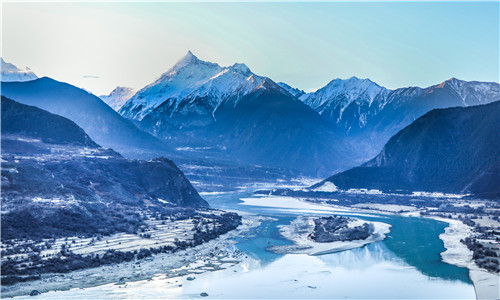
This morning you will first visit the Potala Palace. It is the highest-altitude palace building in the world and the largest and most complete ancient palace complex in Tibet. With a history of more than 1300 years, the Potala Palace was built by Songtsen Gampo, the founder of Tubo Kingdom(633-842). Before arriving at the Potala Palace, I suggest that you can take a picture in distance first. If you have banknotes of 50 China Yuan in your pocket, take them out, and you will find that the painting on the back of the banknote is the Potala Palace. As you get closer to it, you could see the Potala Palace includes two parts, the White Palace and the Red Palace. The White Palace is the winter residence of Dalai Lamas as well as the offices of the former Tibetan local government. The Red Palace is mainly used for worshipping the Buddha and conducting religious affairs. There are five stupas in the Red Palace where the remains of the Dalai Lamas are placed, namely the Fifth, Seventh, Eighth, Ninth and Thirteenth Dalai Lamas. Please note that it is forbidden to take pictures inside the Potala Palace.
And then, you will go to the Jokhang Temple. Jokhang Temple has a history of over 1300 years. It is the earliest Buddhist architecture in Tibet. The statue of 12-year-old Shakyamuni brought by Princess Wencheng from the Tang Dynasty(618-907) was enshrined in Jokhang Temple. There were only three life-size statues of Shakyamuni in the world, namely with the appearance of him in 8 years old, 12 years old, and 16 years old. The 16-year-old Sakyamuni statue was destroyed by war in India. Now, the only two 8-year-old and 12-year-old Sakyamuni statues in the world are in Lhasa. Among the three statues, the gilded bronze statue at the age of 12 is the most beautiful one.
After visiting the temple, you will stroll around Barkhor Street. It is the epitome of the Lhasa city and even the entire Tibetan region. It is not only a prayer road but also the largest commercial street in Lhasa. Barkhor Street is lined with shops with Tibetan, Nepalese and Indian specialties. It retains the original look of the old city of Lhasa, with hand-polished stones and old Tibetan houses next to the street. Besides the old buildings, there are also lots of local food waiting to be savored, such as tsampa, beef jerky, and yoghurt. After your Lhasa city tour, you will be back at the hotel.
Tibet Specialties:

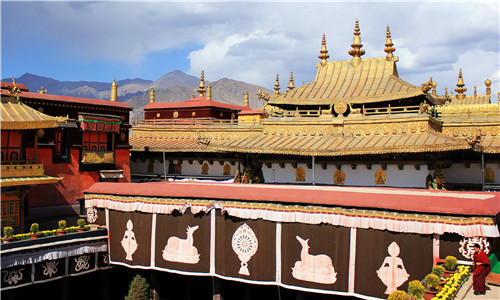
This morning you will first visit Drepung Monastery. Drepung Monastery was built in 1416. It is one of the three major monasteries of the Gelugpa school of Tibetan Buddhism. In the Tibetan language, Drepung means “rice pile”. It is a symbol of prosperity. Among all the buildings in the monastery, the most important hall is the Tsochin Grand Hall. It is located in the center of Drepung Monastery, covering an area of nearly 4,500 square meters. The square in the front of the Tsochin Grand Hall offers a great view of the city of Lhasa. Step inside the hall, you will see the gilded bronze Buddha statues and ghee lamps making the hall resplendent and magnificent. Besides, the thangka murals in the hall are exquisite.
After lunch, we will visit the Sera Monastery. The pronunciation of “Sera” is similar to the pronunciation of “wild rose” in the Tibetan language. The name came from that Sera Monastery was built in a wild rose blooming place. There is a unique religious festival of Sera Monastery, named Sera Bunchin, which means "Sera Monastery Vajrapani Wand Festival". The Vajrapani Wand was brought from ancient India, and it was blessed by the Dalai Lamas. This festival has been celebrated for hundreds of years on December 27th of the Tibetan calendar(about the beginning of February). According to the custom, the activity of "Sera Bunchin" will last 24 hours. Thousands of Tibetan Buddhists have come to the Sera monastery to worship, hoping to have the opportunity to touch the Vajrapani Wand with their head. It is to pray for peace and happiness for the coming year.
Next, we will visit Norbulingka. It was built by the seventh Dalai (1708-1757) to spend summer and has a history of 200 years. It is located on the western outskirts of Lhasa, about 2 kilometers southwest of the Potala Palace. The garden covers an area of 360,000 square meters, which is half the size of the Forbidden City in Beijing. After today’s city tour, your guide will take you back to the hotel.
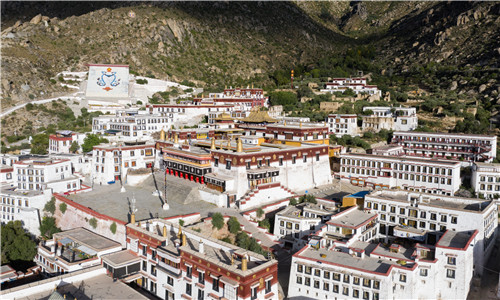

 Shigatse
Shigatse Today we will transfer to Shigatse. The whole distance is about 360 kilometers. It needs to drive for about 7 hours. After driving about 4.5 hours, you could have a stop on the way to enjoy the breathtaking view of Yamdrok Lake. Yamdrok Lake is also called “Holy Lake”. Tibetans believe that, Yamdrok Lake is the embodiment of the goddess and has multiple skills and divine power. It is said that a goddess came to the human world and saw there is no much water in the lake. So she transformed the lake herself to protect the creatures in the lake.
Keep driving about 1.5 hours(80KM), we will visit the Karola Glacier. It is very famous because a famous movie, Red River Valley, was shot here. Karora Glacier is one of the three major continental glaciers in Tibet. Due to high altitude and low temperature, white clouds surround the snowy mountains all day long. You can not shout on the glacier to avoid avalanches or landslides caused by sonic booms. Besides, it is best to wear hiking shoes with bright colors and warm clothing. Sunglasses and sunscreen are also necessary.
After driving one more hour(70KM), we will arrive in Gyantse and visit Pelkor Monastery. With a history of more than 600 years, it is a Tibetan Buddhist monastery where Sakya, Shalu and Gelugpa sects coexist. The Pelkor Monastery is famous for the Pelkor Pagoda. The pagoda is the most majestic pagoda in Tibet by far that has been well preserved. It is a nine-floor pagoda with a height of 42.2 meters. There are more than 100,000 Buddha images painted inside the pagoda. Hence, it has another name, Ten Thousand Buddha Pagoda.
After another 100-minute driving(90KM), we will arrive in Shigatse, you will check-in at the hotel and have a rest.
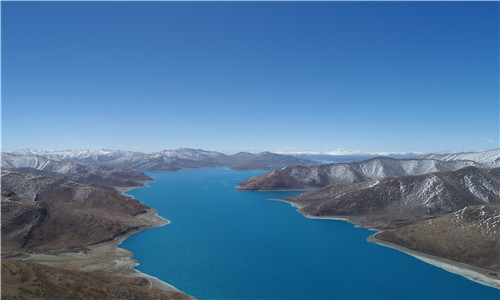

 Dingri
Dingri This morning we will visit Tashilunpo Monastery. If you ever could travel to Tibet, the Shigatse region is a must-see. And Tashilhunpo Monastery is a must-visit place in Shigatse. Built on the hillside, although Tashilhunpo Monastery does not have the imposing atmosphere of the Potala Palace, it is self-effacing and more solemn. The founder of Tashilunpo Monastery was Gendun Juba (Gendun Juba, 1391-1474), who was crowned the First Dalai Lama later. Tashilunpo Monastery was first built in 1447 and later became the base of the Gelugpa school of Tibetan Buddhism in Shigatse.
After visiting, we will transfer to Dingri. We need to drive for about 4.5 hours, and the whole distance is about 240 kilometers. Along the way, you will stop in Lhatse to stretch your legs and do a little sightseeing. Upon arriving in Dingri, you will check-in at the hotel and have a rest.
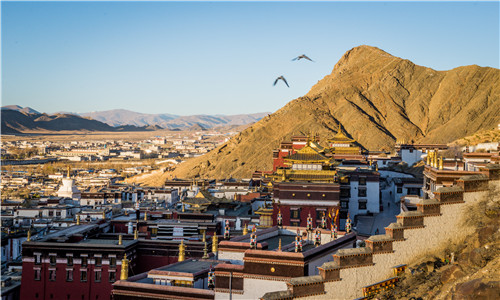
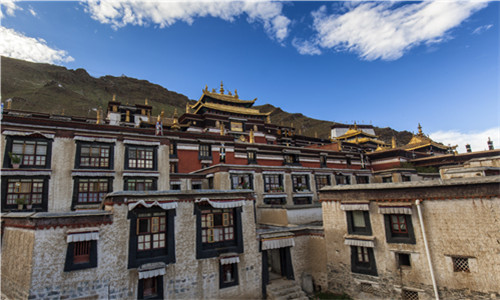
 Shigatse
Shigatse After your breakfast, we will drive to Mount Everest. Mount Everest is about 100 KM to the southwest of Dingri, and it takes about 3 hours. It is also named Qomolangma which means “the Mother of God” in the Tibetan language. It is the highest peak in the world with an altitude of 8848.86 meters. There are four peaks above 8000 meters, 38 peaks above 7000 meters in the Everest region. With so many super high peaks, it is also known as the third pole of the earth. In 1921, there was the first team to climb Mount Everest, but without success. It was not until 1960 that a Chinese climbing team made its first ascent to the top of Mount Everest from the North Slope. In 2008, the Olympic Games were held in Beijing. At 9:17 a.m. Beijing time on May 8, 2018, a Chinese mountaineering team sent the Olympic flame to the summit of the world's highest peak, which became a miracle in the history of the Olympics.
To protect the environment, the Everest Base Camp has been closed to tourists indefinitely. But you could enjoy the fantastic view from the Rongbuk Monastery. With an altitude of 5154 meters, it is the highest monastery in the world. Many mountaineering experts recommend that Rongbuk Monastery is the best place to view and appreciate Mount Everest. The best time to see Mt. Everest is early in the morning or late in the afternoon. In addition to the magnificent view of Everest here, the Rongbuk Monastery itself is also worth visiting. It is a five-floor monastery, but only two of them are in use. The walls of the sutra hall of Rongbuk Monastery are full of exquisite murals of sacred animals, lamas and dharma kings. If your visit coincides with some Buddhist festivals, you will see a variety of religious activities here. For example, on the birth anniversary of Sakyamuni, a whole day of Qiangm dance is performed here. Monks who are dancing will wear masks in the shapes of various sacred animals and brightly colored clothes.
After today’s visit, we will transfer back to Shigatse. It will take around 6.5 hours. Shigatse is about 340 kilometers to the northeast of Dingri. You will check-in at the hotel after arrival.
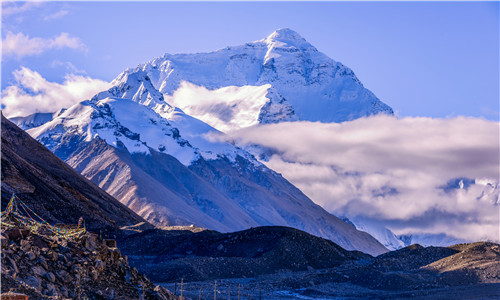
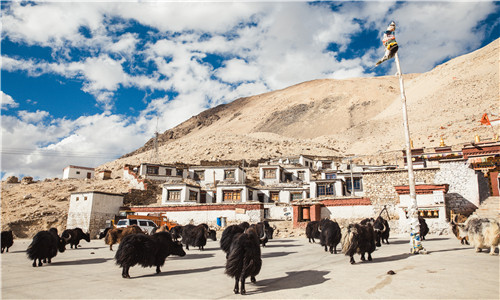
 Lhasa
Lhasa We will transfer back to Lhasa this morning after breakfast. It takes around 5 hours from Shigatse to Lhasa. Shigatse is about 280 kilometers to the east of Lhasa. After arriving in Lhasa, you will check-in at the hotel and have a rest.
Your Tibet tour will come to a perfect end today. Your guide will make an appointment with you to go to the airport based on the time of your flight. The guide will help you with the check-in procedures. We hope you will be satisfied with our service and look forward to seeing you again.
Editor: Summer Hou
Proofreader: Betsy He
| City | Five Star hotel list | Four Star hotel list |
|---|---|---|
| Lhasa | Shangri-La Hotel, Lhasa | Thangka hotel |
| Shigatse | Qomo Langzong Hotel | Qomo Langzong Hotel |
| Dingri | Zhufeng Hotel | Zhufeng Hotel |
 |
![]() About your child or infant, please contact us for a discounted price.
About your child or infant, please contact us for a discounted price.



We started with a few days in Beijing & ended in Shanghai, from where we visited the Forbidden City and Great Wall. In between we visited Terra Cotta Warriors Museum, Panda Base, Shanghai Disneyland.

We had a wonderful holiday in China which will remain long in the memory. China is a breathtakingly beautiful country full of splendid temples and palaces, mountains and rivers, peaceful rural scenes and bustling shopping streets.
 QUICK ENQUIRY
QUICK ENQUIRY